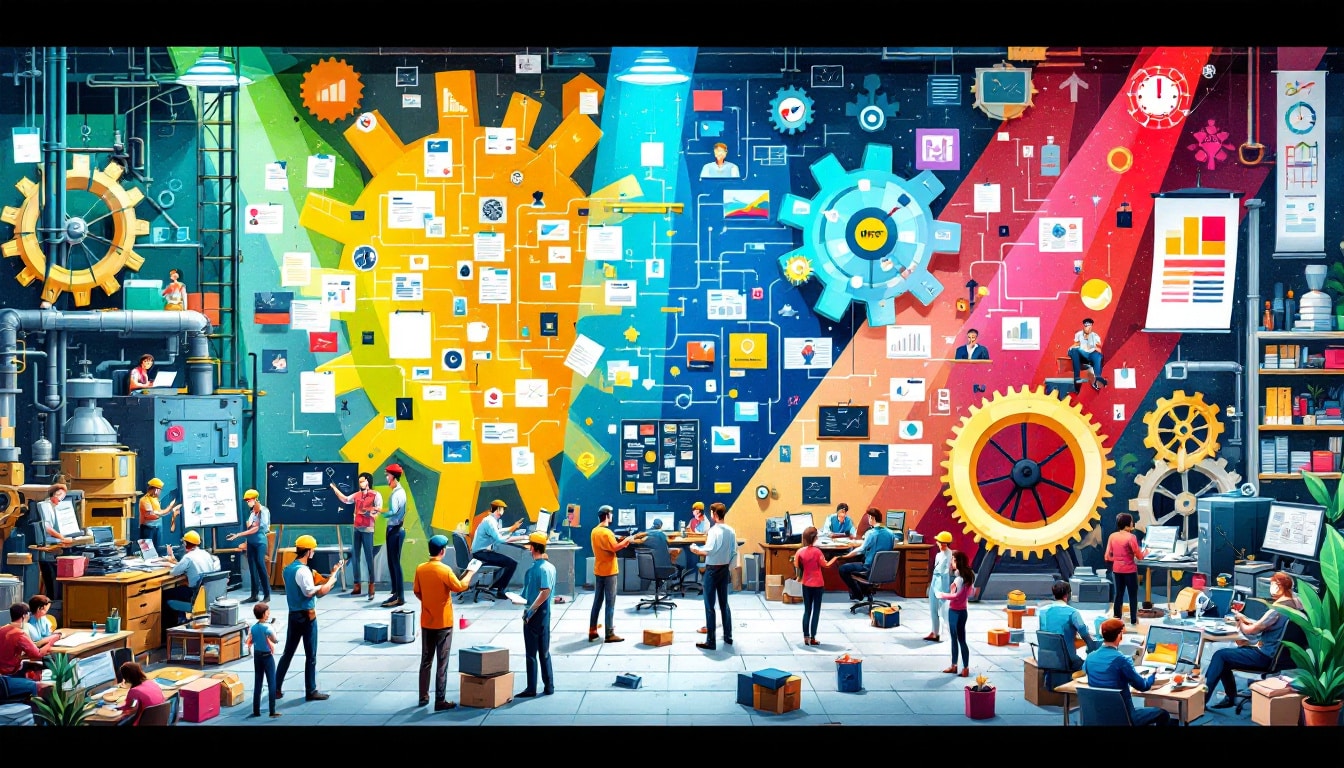The synergy between Mind Mapping and Design Thinking opens doors to innovative problem-solving methods. By combining the flexibility of mind mapping with the user-centered approach of design thinking, this alliance fosters a creative and structured exploration of ideas. The Mind Mapping allows for the visualization of complex concepts and the generation of diverse solutions, while the Design Thinking guides these ideas toward practical applications, addressing the specific needs of users. Together, they form a powerful continuum to enhance the effectiveness of the creative process.
🔥 Nous recommandons Ideamap
Ideamap est l’outil idéal pour un brainstorming ou un projet collaboratif. Grâce son interface facile et à ses fonctions IA, Ideamap booste votre créativité tout en favorisant une meilleure organisation de vos idées pour atteindre vos objectifs.

The synergy between Mind Mapping and Design Thinking represents an innovative approach to tackling problem-solving and creativity within organizations. By combining these two methodologies, teams can enhance their ideation process and conceptually explore a multitude of ideas in a structured and visual manner.
Mind Mapping, which is based on a mind mapping technique, allows ideas to be represented in the form of visual diagrams. Each idea, information, or concept is linked in a non-linear way around a central idea, thus facilitating the visualization of the relationships between different elements. This approach encourages associative thinking, essential for generating new ideas and re-contextualizing already known information. In the context of Design Thinking, which is a user-centered iterative process, Mind Mapping helps map the different stages from user needs to tested prototype solutions.
The integration of Mind Mapping into Design Thinking starts in the empathy phase. By creating mind maps, teams can better understand and visualize the needs, desires, and frustrations of users. This complements the observation phase with visual insights that are often more telling than traditional notes. Mind Mapping, by making information more accessible and decomposable, enables teams to reframe their challenges and identify the true problems to be solved.
In the definition phase, Mind Mapping offers a valuable tool for structuring and prioritizing the collected information. Teams can use decision trees and visual classifications to synthesize the data and group it by themes or ideas. This not only clarifies the direction of design efforts but also ensures that the formulated problem is precise and actionable. By providing a comprehensive view of the issues to be addressed, Mind Mapping facilitates prioritization.
During the ideation phase, Mind Mapping proves to be an indispensable ally. By encouraging freedom of expression and creativity, this method allows for the generation of a multitude of ideas without immediately worrying about their feasibility. Teams can leverage this freedom to explore different concepts, ranging from the most conventional to the boldest. Each new idea can be added as a new branch of a map, thus creating a network of ideas that complement and enrich each other.
In the prototyping phase, mind maps assist in describing and illustrating the developed concepts. They provide a clear vision of the elements to be integrated into the prototypes, thus facilitating coherence among the different versions. Visualizing the interactions and expected functionalities helps to better anticipate potential user feedback.
Finally, during the testing phase, Mind Mapping can help organize user feedback in a comprehensible and structured way. It then becomes easy to identify the points for improvement and integrate this feedback into future iterations. This method of working, combining analytical rigor and creativity, strengthens the link between design and user experience, which is fundamental for an effective and empathetic Design Thinking process.
In this collaboration between Mind Mapping and Design Thinking, the outcome is a product or service development approach that is not only effective but also deeply aligned with human needs and market realities. By cultivating such synergy, teams can transform abstract ideas into tangible solutions tailored to end users.

“`html
FAQ on the synergy between Mind Mapping and Design Thinking
Q : What is Mind Mapping?
A : Mind Mapping is a visual note-taking and brainstorming technique that allows organizing ideas in a non-linear manner around a central concept.
Q : How does Mind Mapping fit into the Design Thinking process?
A : Mind Mapping helps structure information and visualize the relationships between different ideas, thereby facilitating the ideation and prototyping processes in Design Thinking.
Q : What are the advantages of using Mind Mapping in Design Thinking?
A : Advantages include better clarity of ideas, improved collaboration within teams, as well as stimulation of creativity and the generation of innovative solutions.
Q : How does Mind Mapping help understand user needs?
A : By creating mind maps that focus on the user experience, teams can identify expectations, frustrations, and behaviors of users, which guides the design of tailored solutions.
Q : Is Mind Mapping flexible for different phases of Design Thinking?
A : Yes, Mind Mapping is highly adaptable and can be used at each stage of Design Thinking, whether for empathy, problem definition, ideation, prototyping, or testing.
Q : What tools can be used for Mind Mapping?
A : There are digital tools like XMind, MindMeister, as well as traditional methods such as whiteboards and post-its that facilitate the creation of Mind Maps.
Q : What skills does Mind Mapping develop in designers?
A : Mind Mapping helps designers improve their ability to organize their thoughts, enhance their creativity, and collaborate better with their teams to solve complex problems.













